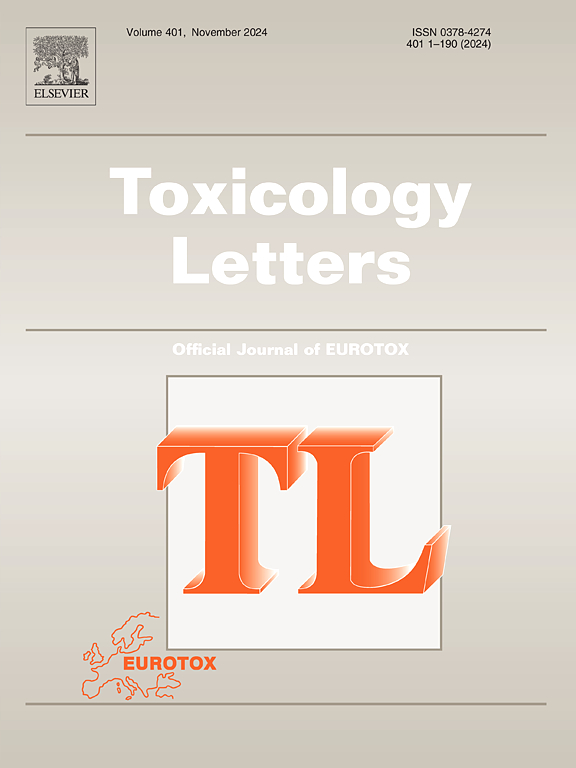Effect of cypermethrin on thyroid follicular epithelial cell injury via the ROS-NF-κB-NLRP3 pathway
IF 2.9
3区 医学
Q2 TOXICOLOGY
引用次数: 0
Abstract
Cypermethrin (CYP, IUPAC name: [cyano-(3-phenoxyphenyl)methyl] 3-(2,2-dichloroethenyl)-2,2-dimethylcyclopropane-1-carboxylate), a type II pyrethroid insecticide, is suggested to have potential adverse effects on human endocrine, immune, and neurotoxic systems. Objectives: In this study, we aimed to investigate whether CYP causes oxidative stress and pyroptosis in thyroid follicle epithelial cells through the activation of the ROS-NFκB-NLRP3 pathway, thereby causing inflammatory responses. Methods: Nthy-ori 3–1 cells were used as an in vitro model and exposed to CYP at different doses (0, 100, 200, 400, 800, and 1600 μmol/L) for 24 h. Results: CYP treatment enhanced oxidative damage in Nthy-ori 3–1 cells, characterized by cellular crumpling, indistinct borders, increased cellular gaps, appearance of intercellular grease droplets, and increased pyroptosis. Subsequent treatment with the caspase-1 inhibitor VX-765 enhanced cell viability in the VX-765 +CYP group, improving cell morphology, reducing pyroptotic vesicles, suppressing oxidative stress, and downregulating Interleukin-18(IL-18) (an inflammatory factor) level. Conclusion: The results demonstrate that CYP induces pyroptosis in Nthy-ori 3–1 cells through activation of the reactive oxygen species (ROS)-NF-κB-NLRP3 pathway.
氯氰菊酯通过ROS-NF-κB-NLRP3通路对甲状腺滤泡上皮细胞损伤的影响
氯氰菊酯(CYP, IUPAC名称:[氰-(3-phenoxyphenyl)methyl] 3-(2,2-二氯乙烯基)-2,2-二甲基环丙烷-1-羧酸酯)是一种II型拟除虫菊酯杀虫剂,被认为对人体内分泌、免疫和神经系统有潜在的不良影响。目的:本研究旨在探讨CYP是否通过激活ROS-NFκB-NLRP3通路引起甲状腺滤泡上皮细胞氧化应激和焦亡,从而引起炎症反应。方法:以Nthy-ori 3-1细胞为体外模型,分别以不同剂量(0、100、200、400、800、1600 μmol/L)暴露于CYP 24 h。结果:CYP增强Nthy-ori 3-1细胞的氧化损伤,表现为细胞皱缩、边界模糊、细胞间隙增加、细胞间出现脂滴、焦亡增加。随后用caspase-1抑制剂VX-765治疗VX-765 +CYP组,增强细胞活力,改善细胞形态,减少焦性囊泡,抑制氧化应激,下调白细胞介素-18(IL-18)(一种炎症因子)水平。结论:CYP通过激活活性氧(reactive oxygen species, ROS)-NF-κB-NLRP3通路诱导Nthy-ori 3-1细胞焦亡。
本文章由计算机程序翻译,如有差异,请以英文原文为准。
求助全文
约1分钟内获得全文
求助全文
来源期刊

Toxicology letters
医学-毒理学
CiteScore
7.10
自引率
2.90%
发文量
897
审稿时长
33 days
期刊介绍:
An international journal for the rapid publication of novel reports on a range of aspects of toxicology, especially mechanisms of toxicity.
 求助内容:
求助内容: 应助结果提醒方式:
应助结果提醒方式:


